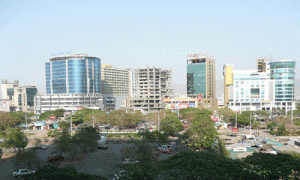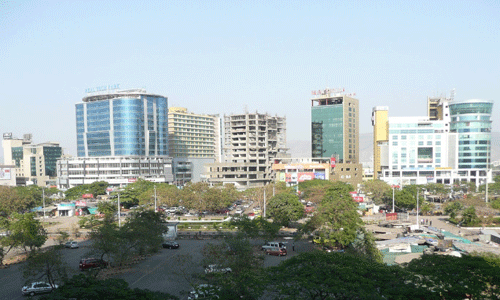By: Ravi Sinha
 Track2Realty Exclusive: The costliest property market of the country, Mumbai has for long defied all the conventional wisdom of economics of demand and supply. It has been a market where a substantial dip in demand had no co-relation with the skyrocketing of prices.
Track2Realty Exclusive: The costliest property market of the country, Mumbai has for long defied all the conventional wisdom of economics of demand and supply. It has been a market where a substantial dip in demand had no co-relation with the skyrocketing of prices.
However, in the wake of Mumbai residential market getting stagnated in the recent years as buyers have largely kept away from the market expecting an imminent drop in prices in the near future, the pressure has started building on the developers.
Facts speak for themselves. As per a recent Knight Frank report the Mumbai market has an estimated 83,000 units of unsold inventory which is approximately 39% of the units under construction. Absorption levels in 2012 are estimated to have dropped by more than 62% from their 2007 heyday. Approximately 50,500 units were launched in 2012 which was an 8% drop from 2011.
Developers are hard pressed today to maintain their net profit margins as rising interest and other input costs such as land and labour in addition to the ever increasing raw material costs of steel and cement continue to constrain developers. Developers are looking to tap into the largest chunk of buyers looking for apartments priced up to Rs. 75 Lakh as an estimated 64% of units under construction today are targeted at this price brackets.
Mumbai real estate developers have become more open to negotiation and are increasingly willing to reduce prices substantially in favour of sizeable up-front payments, finds Knight Frank report.
“The catalogue price still stays. However, unlike earlier, where discounts were no more than five per cent for significant upfront payment, today it is between 12-15 per cent. This is more in the premium segment. The discounts are higher in the middle and lower segments,” says Samantak Das, Director – Research, Knight Frank.
The increase in inventories coupled with stagnating absorption levels were bound to put further pressure on the prices. The rise in interest cost for the realty sector and decline in net profits during 2012 compared to the previous period was likely to compel developers to lighten unsold inventory levels and de-leverage their balance sheets.
“The fact that real estate prices are showing signs of weakening suggests that the long-standing stalemate between buyers and builders is finally turning in the buyers’ favour,” Das adds.
Kamal Khetan, CMD, Sunteck Realty says Mumbai already is a buyer’s market. The scenario today is of deals being closed at a realistic value. Thus, the serious buyers are able to get better deals for faster sales closure. Khetan believes in the short term, prices will continue to remain stable. Approvals too have started coming in for varied projects across the city. The inventory of finished apartments too will take reasonable time for closure. In the long run too; we feel that prices shall remain stable with an upward trend in line with inflation.
“Developers also have realized that the days of achieving super normal profits no longer exist. Moreover, with the high holding of land cost, delay in approvals, leverages balance sheets of most developers; the current pricing is reasonably taking care of the input cost. The strategy mostly being adopted is to sell inventory to a level that takes care of the construction cost. Post achieving that stage, a developer can then be rigid on his pricing to achieve a better profitability,” says Khetan.
….to be continued





